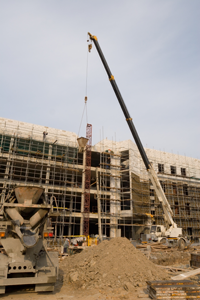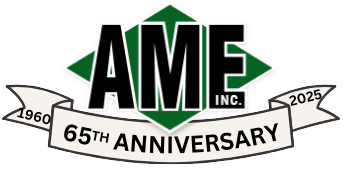 It doesn’t matter if you’re moving a heavy piece of equipment or an entire facility, relocation projects require specialized knowledge and experience. This includes scheduling and budgeting; transportation logistics; safety best practices; and local and international laws and taxes.
It doesn’t matter if you’re moving a heavy piece of equipment or an entire facility, relocation projects require specialized knowledge and experience. This includes scheduling and budgeting; transportation logistics; safety best practices; and local and international laws and taxes.
If you’re thinking about managing a move in-house, consider these four reasons why going at it alone will likely cause unnecessary headaches, delays and unforeseen costs.
1. Voided Machine Warranties
If you have a newer machine and it’s been purchased or installed by someone either internally or by another company, it still may be under warranty. However, if anyone takes it apart for the relocation, there’s a significant chance you’ll void the warranty.
It’s important to work with a relocation contractor to keep the warranty intact, because many companies find that once the machine is put back together, something isn’t functioning properly. Without the warranty, you will need to call for support to debug and power the machine, creating a hefty, unexpected expense.
2. Aggressive Timelines
When planning a relocation, it’s easy to get aggressive with timelines.
While a number of factors can delay a project, something as simple as not understanding the cleared commercial values of your goods can cause equipment to get hung up at interstate and international borders. Or, if you have a production line as one asset, you’ll need to transport it all in one shipment, which can be quite the logistical puzzle!
For example, AME recently organized a relocation where there were eight tandem trucks under one asset number that needed to cross the border through the U.S. and Canada within a 48-hour period. If a truck didn’t cross inside of that route, that asset, and the commercial values in that window, would be detained.
Completing a relocation on time and within budget takes a deep understanding of transportation equipment, logistics, laws and tariffs, to name a few of the details that contribute to the timeline.
3. Miscalculating Asset Declarations
As mentioned in the timelines section, it’s critical to understand the assets and how to accurately declare them, especially if it’s an international relocation project.
Misdeclaring won’t be a catastrophic failure, but it will impact your schedule. To fix the problem, you’ll need to work with the freight forwarders, or a customs clearance agent, to get equipment and components that are being detained at the borders released through them.
As you can imagine, this process is often very tedious. The good news is that proper asset declarations can be avoidable when you work with experienced relocation contractors.
4. International Security
The reality is a lot of plants are located in remote, underdeveloped parts of the world, and when you plan a relocation, the safety of your assets and team need to be considered.
For instance, on a recent relocation project AME managed, the cartels in Mexico were a concern. They have been holding companies hostage saying, “If you want your truck and shipment, it’s going to cost you thousands of dollars.” And, as you know, many relocations are for high-end, very high-dollar assets, which increases the charge.
Knowing this, AME installed live, 24-hour GPS tracking all 600 trucks on that route to help mitigate the risk. They were then able to pull up the system to see where the truck or trailer was sitting or moving at any moment.
Partnering with a company that performs frequent international relocations, will ensure your company is prepared for location-specific nuances.
How to Avoid Double Work Mid-Relocation
All too often, companies think they can internally manage a relocation, then they realize they are in over their heads and decide to bring in a contractor.
To avoid double work, delays and/or going over budget, consider speaking with a contractor at the beginning of a project to evaluate all of your options, especially since companies like AME will do it for free and confidentially.
This small but critical step can save you a lot of grief and aggravation and help you clearly understand what the project will require and resources needed.

